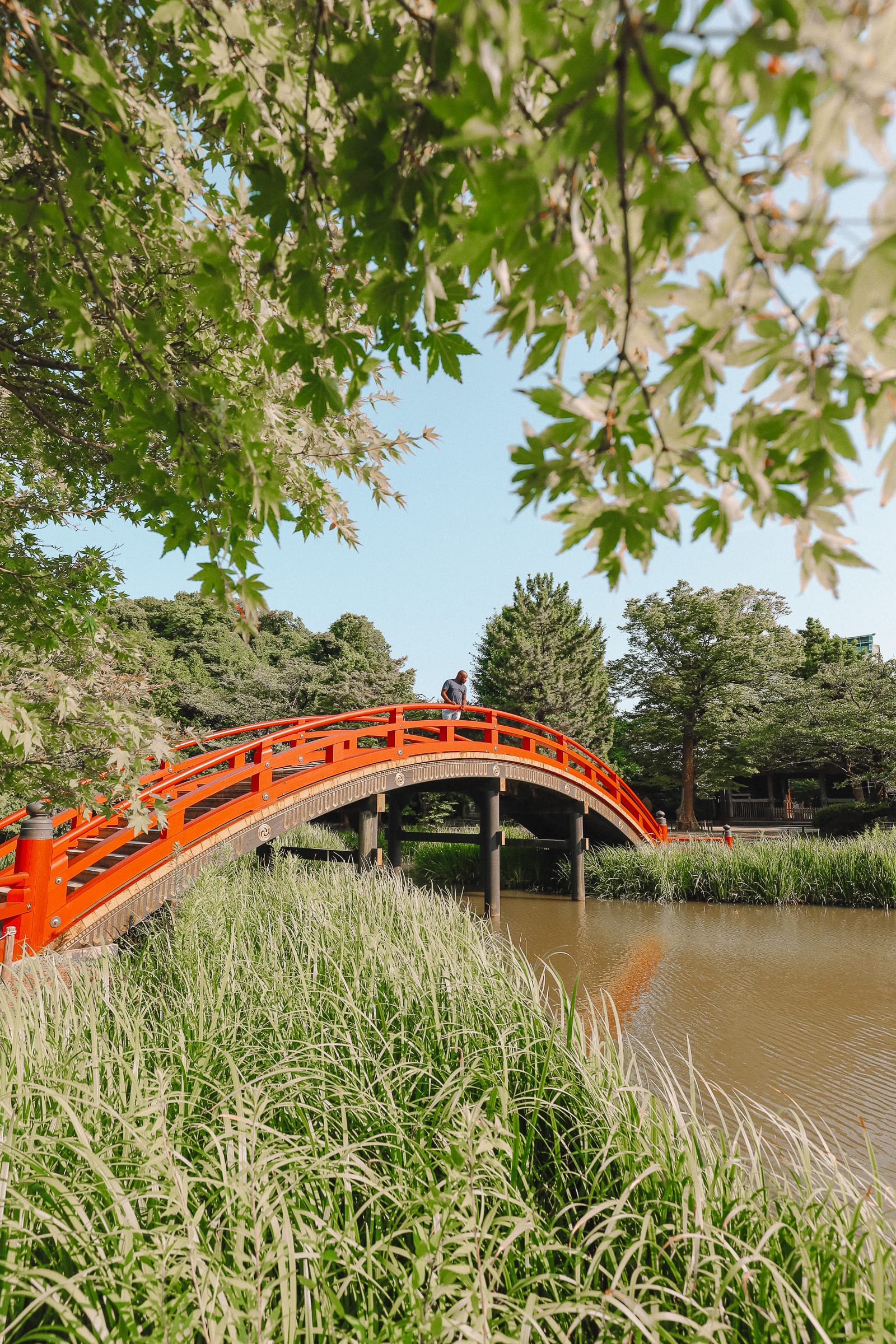After visiting Kanazawa the previous day, we opted for a stopover in Yokohama, which is conveniently located only 30 minutes from Narita Airport (and Tokyo) by train.
Interestingly, despite having visited Tokyo on two occasions before, we had never ventured beyond its borders to explore Yokohama, which is in such proximity. The distinction between the two cities becomes increasingly ambiguous, particularly when traveling by train.
Nonetheless, Yokohama stands as a unique city, and with a few leisurely days available, we deemed it an ideal prelude to our flight home.
With that in mind, we made our way to the Kanazawa Ward of Yokohama, an area characterized by a quieter ambiance compared to the bustling center. Alighting from the train at Kanazawa-Bunko Station, we promptly checked into our ryokan for the night before embarking on our explorations.
Our initial destination was the quaint Seto Shrine adjacent to Kanazawa-Hakkei Station. There is an undeniable allure to the historical shrines and temples in Japan; perhaps it is the architecture or the serene atmosphere that never fails to captivate me.
The Seto Shrine in Yokohama, although relatively small, was perfect for a quick visit, especially since my appetite had begun to signal lunchtime.
After wandering the grounds and examining the structures, we proceeded to CoCo Ichibanya for a taste of Japanese curry.
To be candid, I had not previously experienced Japanese curry (barring Katsu Curry), but upon entering, I instantly recognized we had made the right decision; the aroma was absolutely delightful!
It may not have been the most upscale or chic dining establishment, but the flavors surpassed anything I could have anticipated.

As soon as we settled in, we placed our orders. Both of us opted for curry ramen (with varying meats) alongside gyozas. I must reiterate that my hunger at this point was quite pronounced!
During the ordering process, we could choose the spice level for our curry. Having naïvely assumed that the curries might lean towards creaminess (I cannot explain this logic), I was entirely mistaken!
In the end, we both chose the spiciest option available, and truth be told, I nearly felt lightheaded! The spice was intense yet delicious, and my hunger led me to almost delirious enjoyment as I slurped up the noodles.
Even with the air conditioning, I found myself perspiring quite profusely! It was quite the meal!
Following our fiery culinary experience, we decided to cool off with a visit to Shomyoji, a nearby Buddhist temple just a short walk from our ryokan.
As we entered through the main Niōmon gate, we encountered the two Niō temple guardians that are common in Japanese temples. Although I had previously seen these statues, I had never paid much attention or received any elaborate explanations regarding their significance.
They certainly present an imposing presence while entering. However, fear not—these figures are designed to ward off evil and symbolize the cycle of birth and death.
Once we passed the statues, we made our way toward the Jodo-style garden and Aji pond, which separates the gate from the temple itself.

The grounds were stunning, enveloping us in tranquility.
However, as we crossed the bridge, we were greeted by an assembly of terrapins swimming alongside us. In a matter of moments, they seemed to follow us across the bridge, and I felt akin to the Pied Piper as we transitioned to the temple!

Passing the terrapins (apparently, they can nip!), we made our way to the temple established during Japan’s Kamakura period.
With centuries of history encapsulated within its walls, we took a moment to reflect and absorb the ambiance.

In total, we likely spent an hour in the temple grounds, savoring the peace and quiet. It may sound cliché, but it truly felt blissful to be there.
Realizing that the temple grounds would close shortly, we hastily returned to our ryokan, ensuring we wouldn’t be locked in.

Thankfully, we arrived with ample time to spare, allowing us to leisurely stroll back to our ryokan and prepare for bedtime.
Kitaya Ryokan proved to be a distinctive retreat, although it may not have matched the luxury of the ryokan we experienced in Hakusan City. It compensated with its charm.
The building itself boasts a few centuries of history, having originally been located on the bustling streets of Tokyo. Nearly 90 years ago, it was relocated to the serene outskirts of Yokohama, now registered by the Japanese Government as a tangible cultural property, a fitting acknowledgment for its historical significance.
Stepping into the ryokan felt akin to a journey back to 19th century Japan, devoid of contemporary distractions—except for WiFi, of course.
The room was beautiful, and as traditional with ryokans, our bedding would be prepared later in the evening. After indulging in some green tea and watching the sunset from our room, we decided to unwind and call it a night.

It had been a thoroughly relaxing day, crowned with a traditional ryokan experience.





